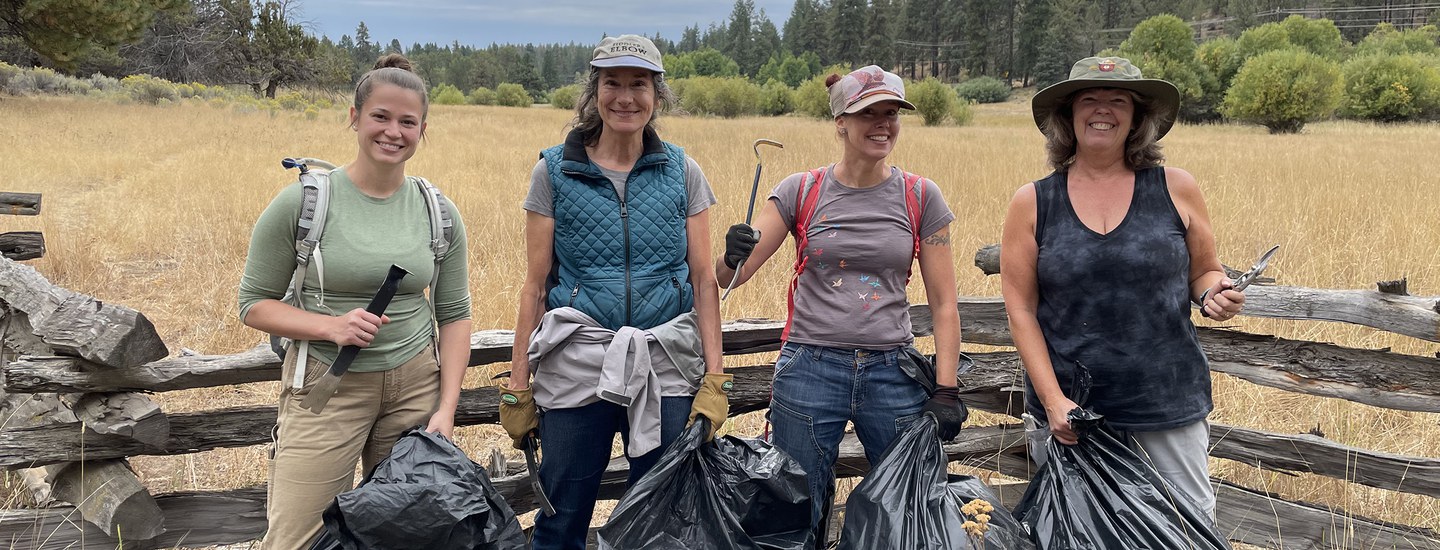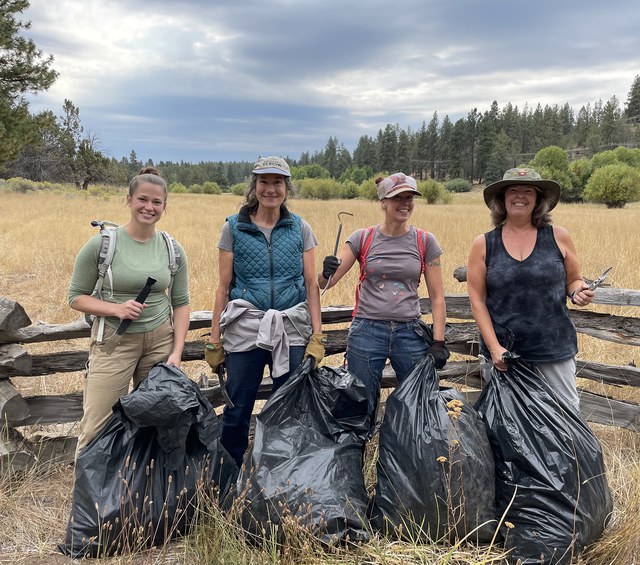When the Land Trust protects a new piece of land, one of the first steps our stewardship team works on is identifying and mapping plant species, including weeds. This helps us understand what native plants are doing well and where invasive plants need to be addressed. Over time, these maps are updated, helping us track progress and adjust our approach. Weed management isn’t a one-time task; it’s a long-term commitment to restoring our conserved lands.
Invasive weeds are a widespread challenge, but we prioritize species that are especially aggressive, newly invading an area, or negatively affecting a restoration project. The most problematic weeds tend to spread quickly and outcompete native plants, reducing the habitat quality for wildlife. For example, medusahead rye is an invasive annual grass that can outcompete Central Oregon’s native bunchgrasses. It’s difficult to detect early, and where you find a little, there’s usually a lot! In cases like this, herbicides are often the best tool and we choose selective herbicides that target invasive plants while minimizing impact to native species.

Overall, our goal is always to move toward fewer herbicide applications over time. Herbicides are one tool among many. We use them alongside strategies like hand pulling weeds and planting native species. As native plant populations become healthier and more established, they begin to outcompete the weeds. This reduces the need for continued herbicide use.
The method of applying herbicide depends on the location and size of the project. For small or sensitive areas, such as near streams, we use backpack sprayers with handheld wands. This allows us to target individual plants without affecting the surrounding area. In more accessible areas with larger infestations, we may use ATVs to increase coverage. In large or difficult to reach areas, we sometimes work with helicopters or planes to apply herbicide. In areas with little remaining native vegetation, these aerial treatments are followed by seeding or planting native plants. Throughout the year, we combine techniques like pre-emergent herbicide (applied in fall or winter to stop seeds from sprouting) and post-emergent herbicide (applied in spring or summer to growing plants), alongside continuous monitoring.

One example of long-term success with weeds is the Hindman Springs native plant restoration at Camp Polk Meadow Preserve, where we used a mix of solarization, herbicide, hand pulling, planting, and seeding. Over seven years, native plants have become well established, reducing the need for invasive weed control. Similar progress is visible at Whychus Canyon Preserve and other parts of Camp Polk Meadow Preserve, where weeds can mostly be hand pulled now.
Weed control is not quick work, but it is rewarding! With consistent effort and a toolbox of strategies, we can restore lands where native plant communities thrive long into the future.
Learn More:


